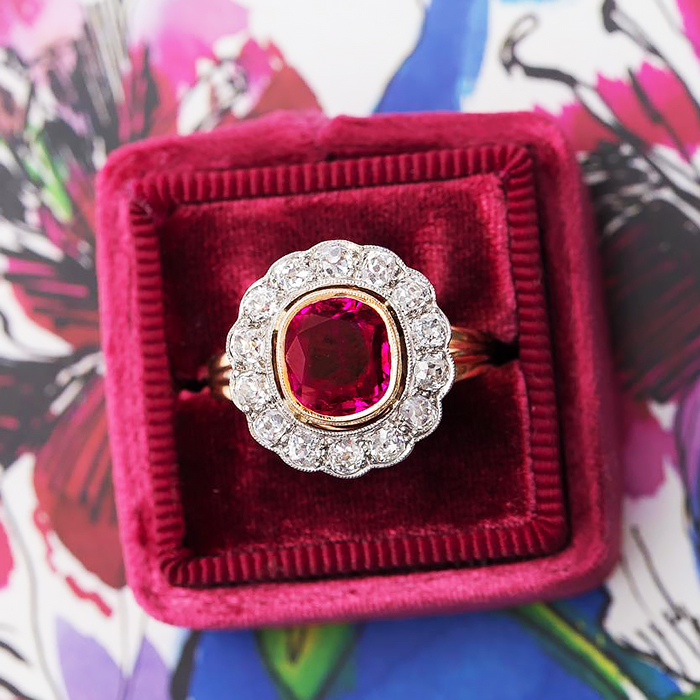
Some of the most gorgeous pendant necklaces and engagement rings out there are adorned with rubies. As is true of any fine gemstone, verifying the authenticity of your piece of jewelry is key. This is especially true if you’re shopping from a nontraditional source or independent retailer. While it’s always a good idea to consult a certified gemologist or fine jewelry expert, there are a few key methods for determining a ruby’s authenticity using simple at-home tricks. Read on for a three-step guide to spotting a genuine stone.
1. Scratch the Surface
Don’t worry—provided that your ruby is authentic, this method will inflict no damage on the stone. This is because when it comes to fine gemstones, only diamonds are harder than rubies. Use a small pin, the edge of a coin, or a stone to scratch the surface of the ruby. If no scratch mark appears, then it’s very likely that the ruby is authentic. Note: While this is a good way to tell if a ruby is real, you may want to avoid damaging your jewelry in the event that it is not authentic. Choose an inconspicuous spot on the back or side of the gemstone where a potential scratch is less likely to be noticeable.
2. Perform a Visual Inspection
Simply taking a hard look at the stone, specifically with an eye toward color and shine, can be an excellent way to tell if a ruby is genuine. Real rubies have a depth and glow that tends to be absent from imitation gemstones. The color of a genuine ruby is often described as “stoplight red.” Fake rubies are less vivid and appear flat when it comes to the color. Be aware that the darkness or lightness of the color can vary from ruby to ruby, so a particular hue won’t necessarily rule out authenticity. Different color profiles can often be traced to whether a ruby is heated or unheated, with heated rubies being more common and shinier. Unheated rubies are rarer, more valuable, typically less bright, and have an appearance similar to garnet.
3. Spot Impurities
A proper visual inspection (and a search for impurities) is one of the most efficient ways to tell if a ruby is real. This method can be dramatically aided by the use of a 10x magnifying glass. Examine the gemstone in a well-lit area against a solid backdrop, like a plain sheet of paper or an untextured cloth. Some minor impurities may be visible within an authentic ruby, but beware of flaws like inconsistent coloration, tiny bubbles, or unnatural marks either on or within the stone. Another red flag is when a stone appears to be "too perfect,” which means that the ruby is likely a glass composite.
Finally, if you suspect that your ruby may be fake, seek out a certified second opinion at your local jeweler.
This article was published at an earlier date and has since been updated.